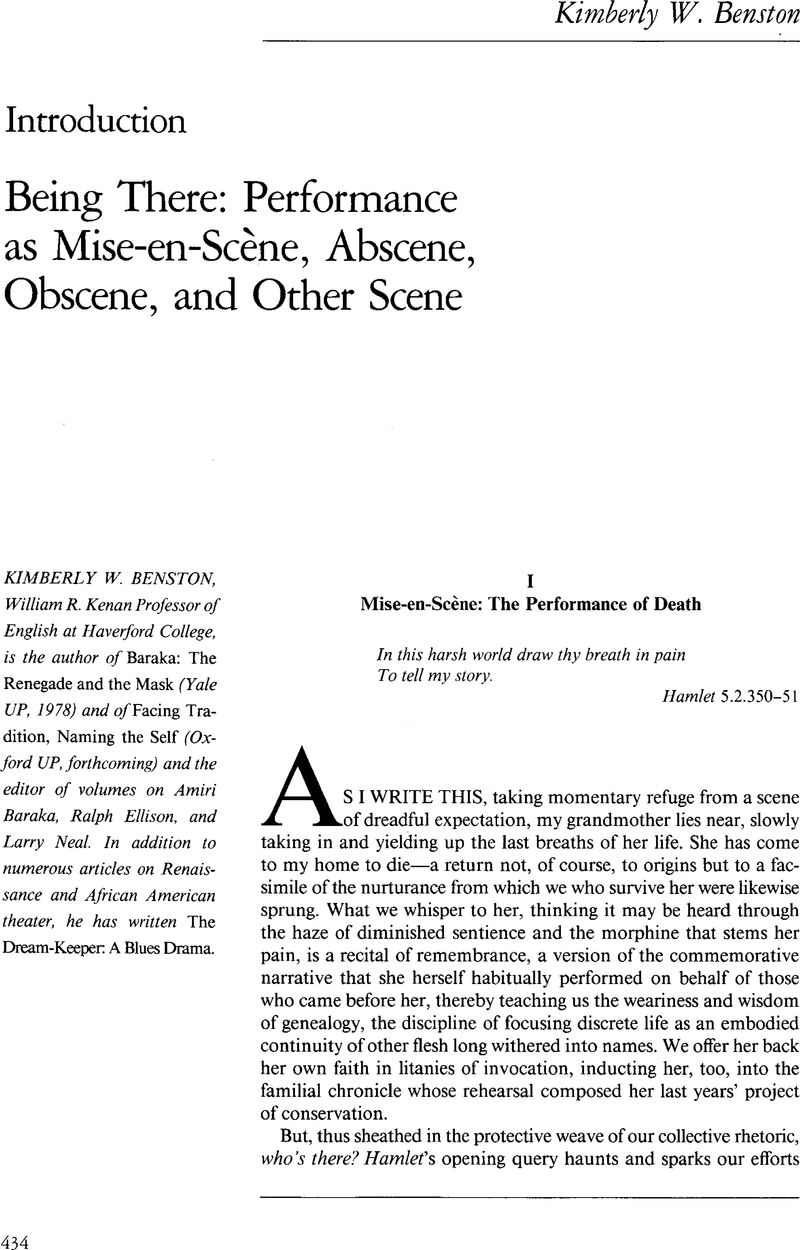Crossref Citations
This article has been cited by the following publications. This list is generated based on data provided by Crossref.
Lee, Josephine
1999.
Disciplining theater and drama in the English department: Some reflections on ‘performance’ and institutional history.
Text and Performance Quarterly,
Vol. 19,
Issue. 2,
p.
145.


